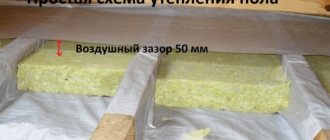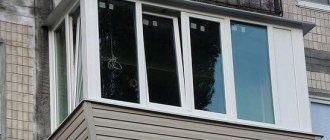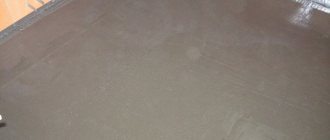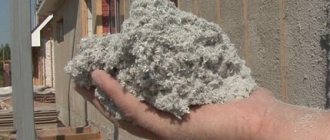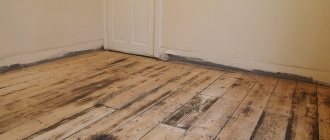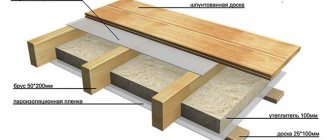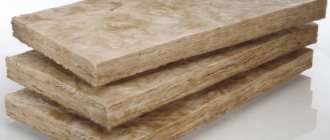What is ecowool?
Before making a choice in favor of ecowool, you should understand what kind of material it is and what it consists of. It is made from waste paper. The consistency is loose, the material is light in weight, and is produced with the addition of substances that prevent combustion and decomposition. Only through their inclusion and impregnation do the fibers acquire durability and avoid rapid destruction. Durability and fire safety are achieved by adding borax and boric acid. Borax affects the fire hazard and increases the safety class to G2, thus the material is used for insulating roof structures, facades, interfloor ceilings and floors of buildings. But its use for insulating air ducts of gas boilers and passages from solid fuel combustion chambers is prohibited. Boric acid prevents the penetration of rodents, rot and fungi. Unlike mineral wool and basalt slabs, in this material there are rarer cases of their penetration and development.
Technical characteristics of ecowool.
The structure of the material is a single mass of long fibers that can ensure the creation of a single and seamless layer of insulation, without the formation of cold bridges. Its application into the interfloor flooring ensures reliable and dense filling of the space and protection of the more vulnerable part of residential premises - the floors.
Thanks to its high technical properties (thermal conductivity reaches 0.040 W/mK) and adjustable density (from 25 to 95 kg/m³), ecowool is not very different from other good thermal insulation materials - mineral or basalt wool, extruded insulation. But there are several parameters that still make it stand out against the general background.
Advantages and disadvantages of ecowool floor insulation
The material has numerous advantages, thanks to which it is very popular among users:
- The product is multifunctional. A layer of substance on the ceiling of a multi-story building not only insulates it, but also soundproofs it.
- The fibrous structure adheres well to any surface. It forms an elastic mass that, when installed correctly, does not sag.
- The material is impregnated with antiseptics that are destructive to fungus and mold. Mice do not live in the insulating layer.
- It retains its qualities even at 20 percent humidity, and no vapor barrier is required when laying on the floor.
- Cold bridges never remain in cotton wool. The mixture is supplied in a hose under pressure and fills all voids.
- Working with the substance does not require personal protective equipment.
- Installation of the product is carried out in the shortest possible time.
- Insulation requires a small amount of wool - 28-65 kg/m3.
- After insulation there is no need to wait for the raw materials to dry. Finishing can be done immediately after applying the substance. In addition, it is allowed to work at any temperature and humidity.
- The use of special devices allows you to quickly cover large areas.
Thermal insulation of ceilings with cellulose has a number of disadvantages that the home owner should be aware of:
- Before insulating floors with ecowool, the installation site must be carefully prepared. Preliminary work takes a lot of time.
- The substance is made from waste paper, but the technology is quite complex, so its final cost is much higher than products for a similar purpose. In addition, the insulation process requires special expensive equipment.
- Despite the presence of antipyrine in the substance, under the influence of an open fire, cotton wool begins to smolder. To avoid trouble, it is not recommended to use it in fire hazardous areas. Places near the stove should be protected with asbestos or basalt mats.
- Over time, the cotton wool shrinks, so it is filled with a reserve.
Preparing the base
Insulating the floor in a private country house is not a difficult task at all if you follow some rules. The optimal thickness of the insulating layer should be at least 20 cm. This is enough to minimize heat loss. However, in regions with cold winters, insulation up to 30 cm thick is installed in the floors.
Typically, in private houses, logs are assembled from boards measuring 20x5 cm. The distance between the logs is 60 or 40 cm, depending on the floor covering and expected loads.
OSB sheets or boards treated with an antiseptic are attached to the bottom of the joists to prevent ecowool from shedding. Then, using a stapler, a layer of windproof film is mounted with the rough side up to the heat-protective material. The membrane is laid in rows with a 15 cm overlap.
When insulating an old floor with ecowool, preliminary preparation is also required. Under the structure it is necessary to provide protection against crumbling. To do this, boards or OSB sheets are attached to beams or joists. Insulating material is blown through the holes in the subfloor covering. The size of the holes must be no less than the diameter of the blower hose.
Dry technique
If it is necessary to insulate a frame house, underground space, ceiling, etc., then the heat insulator is applied using a dry method. For this method of laying ecowool, it is necessary either to have a closed cavity or to place the insulated surface horizontally.
Base waterproofing
A typical example of the implementation of the dry method is floor insulation with ecowool.
The work is carried out according to the following scheme:
- Cut-off waterproofing is laid on the base - bitumen mastic, roofing felt, membrane or thick polyethylene.
- A floor frame is mounted on top of the waterproofing - a system of joists supported by adjustable posts or cranial bars.

Blowing material
- Cellulose fiber is blown into the gaps between the joists using a special compressor. In this case, the volume of material is calculated so that the upper boundary of the insulation layer is slightly higher than the upper edge of the joist. This will avoid excessive compaction of ecowool when laying the covering.
It’s not worth saving - slight shrinkage is still typical for the material, so there is a risk that over time large voids will form under the floor.
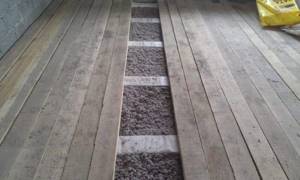
Covering of boards over a layer of insulation
- A subfloor made of boards or plywood is laid on top of the insulated joists. Laying a vapor barrier membrane is not required.
The method of thermal insulation of walls differs from floor insulation in a slightly greater complexity:
- First, the frame is sheathed, with continuous vertical cavities remaining between the posts, not separated by horizontal partitions.
- To access the insulated cavity, either a special hole is made or a small fragment of the sheathing is not installed.
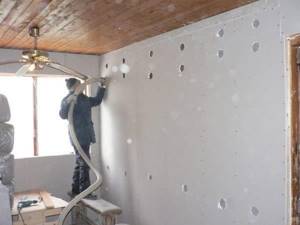
Blowing through holes in plasterboard sheathing
- As an alternative to sheathing, membranes (Tyvek and analogues) can be mounted on the frame, forming closed cavities and preventing the insulation from crumbling.
- The injection device hose is inserted into the hole in the upper part of the cavity. Ecowool is fed through it, which fills all the free space layer by layer.
For this you will need
- garden vacuum cleaner;
- construction plastic trough or similar container;
- corrugated hose for wires;
- scotch;
- drill with an attachment for mixing paints and an attachment for holes in OSB, 72 mm in diameter.
Part of the vacuum cleaner is disconnected, and the terminals from it are transferred to the remaining part, since an excessively long trunk loses suction power or the vacuum cleaner does not turn on.
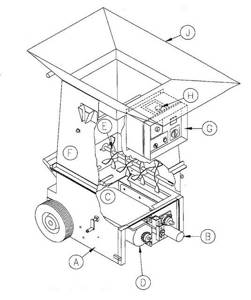
Diagram of a blow molding machine for ecowool: A) Basic platform; B) Gateway; C) Damper; D) Speed reducer; E) Baking powder; F) Loading funnel; G) Main control panel; H) Switch; I) Cord hanger; J) Feed hopper tray.
It is best to bite out the teeth that lead to the dust collector on the connection pipe in the vacuum cleaner with pliers, since ecowool gets wrapped around them and the entire passage gets clogged as a result. The corrugated hose is connected to the opening of the dust collector by wrapping it with tape. To prevent dust from flying, you can put a fingerless glove on the hose or loosely wrap some rag, which, after the hose penetrates the wall, moves, completely covering the hole.
In order to prepare walls for insulation with your own hands, holes are made in the outer covering sheets, sufficient to place an improvised hose freely, with a diameter of approximately 7-7.5 cm. Holes, as a rule, are made under the ceiling, 5-10 cm from it, at regular intervals of approximately 1 m.
Insulation using a dry method Insulation occurs in this way: ecowool is poured into the trough to about halfway, stirred and whipped with a mixer attachment, in the process occupying the entire space of the trough to the edges.
The corrugation is inserted into the hole, not reaching the bottom by about 30 cm. To do this, the required distance is measured from the outside and a corresponding mark is made on the hose with a marker.
In order to carry out the installation yourself, you will need at least two people. The first holds the corrugation while standing on a stepladder or trestles under the ceiling, the second, turning on the vacuum cleaner at medium power, gradually sucks out the ecowool from the trough.
During the insulation process, you can understand that the ecowool has already risen in the wall to the level of the hose by the sound. Laying stops, the vacuum cleaner is turned off and the hose is pulled out of the hole another half meter. Then they seal the hole again with a cut-off glove or cloth and start blowing again, turning on the vacuum cleaner.
This happens to the very top, when the hose is inserted only 1-2 cm and compacted until it stops. Insulation in this way is carried out in each hole in turn, and upon completion the hole is sealed.
Wet insulation These methods are used mainly for insulating horizontal surfaces from below, when there is no access to them from above.
Installation is carried out in the same way as in the dry version. The only difference is that before application, ecowool is wetted with water and therefore sticks when applied to vertical structures. Thus, the material completely fills the space and retains its properties after drying.
High adhesion is ensured by the presence of lignin in ecowool. This is a sticky substance of plant origin. When dry, the insulation firmly adheres to all surfaces, forming a covering layer on electrical wiring and other communications, the integrity of which is maintained for many years.
Wet-adhesive installation It differs from wet installation in that the ecowool is moistened not with water, but with glue diluted in a more liquid consistency. Its applications include low deformation during the drying process, absence of harmful impurities and elasticity.
After completion of application, the wet layer of excess is cut off with a special cutter, and then external structures are mounted.
Ecowool floor insulation technology
As a rule, the floor design with some non-fundamental differences looks like this:
- The base of the floor is filled with concrete mortar or remains earthen;
- Next, the subfloor is made up of wooden logs;
- The bottom side is lined with a vapor barrier film (this option is required if the floor is earthen);
- The underside of the subfloor can be additionally covered with a layer of moisture-resistant plasterboard;
- Ecowool is manually poured on top without tamping (see below for the mechanical method of blowing);
- A finishing layer of floorboards, OSB, DSP or laminate is laid on top of the wooden logs and insulation;
- When mechanically blowing ecowool, special technological holes are used in the floor, which has already been laid with the top finishing layer. After the insulation is blown into the cavity between the joists, the technological holes are closed.
This technology allows for seamless insulation of the floor of a country house. Ecowool fills the entire space, covering all communications and electrical cables laid along the base of the floor. After insulation, there are no gaps left between the communication elements and the floor.
Ecowool belongs to the G-2 flammability class and, if wiring in the floor catches fire, it prevents the spread of fire, since it does not burn, but smolders.
Cellulose insulation is not suitable for insects and rodents due to their intolerance to the natural component - borax. This gives the home additional comfort and sanitary safety.

Selection of equipment for installation of ecowool
Before laying, the raw materials must be fluffed to a uniform consistency. Only in this state does it have the necessary insulating characteristics. Mechanization of the process involves the use of special devices that automatically loosen the material and supply it along with air through the pipe to the ceiling.
A typical blow molding device design looks like this:
- Platform on which the engine, gearbox, blower and other components are mounted.
- Electric motor with gearbox - can be two or three stages. This scheme allows the buyer to choose products based on performance and power. Typically, the power plant operates on a low current, which ensures the machine is silent and durable.
- Gateway - designed to capture cotton wool and fluff it up. From it the working mass is fed into the hose.
- Funnel - for loading material into the device.
- Damper - allows you to regulate its flow into the gateway.
- Baking powder - fluffs the compressed substance.
- Remote control - to control the installation. In many products, you can change the speed of movement of biomass and its supply remotely.
- Emergency switch - for quickly stopping the machine.
Manual styling
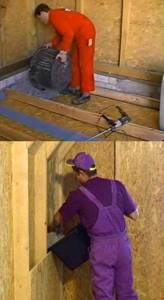
One of them, industrial, consists of spraying pre-moistened ecowool onto the surface requiring treatment using specialized equipment, as well as pumping dry material into the insulated frame with a powerful compressor. In addition, you can install the material manually, but this will increase its consumption. This process will take an order of magnitude longer.
The manual method of installing the material is labor-intensive, increased time costs, and the impossibility of completely filling all existing cavities, voids and cracks. But many people prefer this option, since it turns out to be much cheaper.
If you intend to insulate a shed, outbuilding or garage, follow the given procedure:
- Since the material is in a compressed state, it is necessary to fluff it well. You can do this using a drill and a paint attachment. The fluffed material can begin to be used.
- The briquette with insulation is opened, the mass is poured into any suitable container.
- This method of using the material can only be used for filling it into floors (when laying it from above), or for dry laying it into a wall space.
- When filling into floors, the mass should be evenly distributed between the joists and rafters. It is used to fill all the required places until a surface with a slide is formed. When the floorboard is subsequently used, the material will be compacted to the required volume.
- When dry filling the mass into vertically located structures, it should be carefully compacted: the density of the material should become only two times less than the original one inherent in the factory briquette.
Advantages of mechanized insulation
Professional equipment is used to insulate the floor with ecowool. The operator smoothly moves the sleeve, ensuring uniform application of ecowool.
Mechanized installation has a number of advantages compared to manual installation:
- Manual labor for carrying material to insulated structures is eliminated;
- The blowing machine fills all hard-to-reach areas and crevices with material;
- A layer of insulation without seams, differences in thickness, with uniform density;
- Thermal insulation does not shrink due to the high density of the layers.
This is interesting: the process of insulating an ecowool area of 100 m², 20 cm thick, manually takes approximately two days. Continuous installation using blow molding equipment lasts 2.5 hours.
To make floor insulation with ecowool as effective as possible, use a professional that not only produces GreenWool insulating material, but also carries out installation using specialized equipment.
The insulation process is not limited to simply applying material to the surface. This also includes a set of related works:
- Assessment of the condition of the object;
- Recommendations to the customer on choosing the method of installing ecowool, the optimal layer thickness, taking into account the specifics of the design;
- Selection of insulating materials to provide protection against moisture penetration into the insulation: steam and waterproofing membranes.
The installation of ecowool on site is carried out by a team of two operators. Our specialists have been trained to work with blow molding machines and have at least 20 years of experience in this field.
Insulation of floors with ecowool is carried out using imported equipment with a productivity of up to 1270 kg per hour, depending on the volume of work. For effective and high-quality thermal insulation, the machines are equipped with additional accessories: hose attachments, adapters, nozzles. This allows you to insulate complex structures and hard-to-reach places.
Professional installation using specialized equipment will guarantee high energy efficiency of a home, industrial facility, administrative building, or other facility.
Methods of insulation with cellulose wool
Insulation carried out with ecowool is of three types:
- Wet;
- Dry;
- Manual.
Dry styling
The dry method of insulation with cellulose wool is relevant when working on horizontal, vertical and inclined closed surfaces:
- Paul;
- pitched roof;
- Floors, etc.
The process looks like this.
- If the plane is horizontal, a layer of waterproofing is laid.
- Logs are installed on top of the waterproofing.
- Dry ecowool is blown between the joists using a pneumatic installation. You should not excessively compact the space between the joists, otherwise the thermal insulation effect will suffer.
- Try to blow in the material with a certain excess, since ecowool settles over time.
The advantage of the dry method is that ecowool can be insulated all year round. There is no need to wait for optimal conditions for the cellulose mass to dry. But you won’t be able to do the work yourself without equipment.
Wet method
If the surface that needs thermal insulation is open, then it would be optimal to choose a wet insulation method.
- Before starting insulation, the cellulose mass is moistened with water to acquire an adhesive structure.
- Ecowool is supplied under pressure to the surface through a sprayer and sprayed onto the insulated structure.
- Adhesion provides excellent grip on wooden surfaces and more.
- To achieve high-quality thermal insulation, it is necessary to carefully fill all existing cavities.
- After completion of application, excess layers of ecowool are removed with cutters.
- It takes 24 hours for the cellulose wool to dry.
- Once the insulation is complete, you can begin finishing.
Manual method
Even when using equipment, sometimes you have to apply ecowool on surfaces with your own hands. It is not recommended to completely insulate by hand with cellulose wool, since the method’s efficiency is too low.
The only justified situation when doing insulation with your own hands is when working in hard-to-reach areas.
The process works as follows.
- The briquette with ecowool is opened, the contents are poured into a large container.
- Using a drill with an attachment, the mixture is mixed for several minutes. Please note that the material increases in volume several times when stirred. That's why the capacity must be really large.
- The loosened ecowool mixture should be poured into hard-to-reach cavities with your own hands. A scoop or small spatula works great for this.
- Tamp down the cellulose fibers. The material is poured slightly above the level of the wooden logs, since the ecowool will become compacted when laying the rough covering.
- When the last layer of cellulose wadding is poured in, lightly moisten the top layer of material with a spray bottle. This will make the ecowool denser, which will provide effective insulation.
Cellulose wool is a unique thermal insulation material in many ways. But before you use ecowool, make sure that this material is suitable for your situation.
General principles of thermal insulation
The correct technology for thermal insulation of floors consists of five main stages:
- dismantling old floors;
- installation of rough (technical) floor;
- laying insulation and securing it;
- laying a hydro-vapor barrier over the insulation;
- installation and securing of the finished floor.
Each specified stage must be carried out with the utmost care. If errors are made during the installation process, correcting them may require large amounts of time and money. Therefore, it is not recommended to carry out work without prior preparation, in a hurry and without due care.
Do-it-yourself insulation of a wooden floor in a house: video
Today on the Internet there are a great many training videos for self-installation of insulation. Viewing them will allow you to understand the technology of performing the work, the principles of selection and the main stages of laying materials. In addition, such videos contain a large number of useful points. This way you can learn, for example, about the correct filling of a floor screed with polystyrene foam insulation.
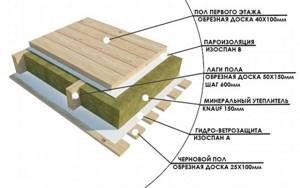
Floor insulation scheme on the first floor
To make the floor in the house warm, you need to take into account many nuances. The correct choice of insulation plays an important role in this. When choosing a material for yourself, you should not be based on price or installation technology. Consider the type of structure, the nuances of the landscape and the features of the house’s operation (permanent or seasonal). Based on this, you can choose the ideal insulation for the floor.
Calculation of the amount of insulation and the density of its layer
When insulating the floor of interfloor ceilings, it is necessary to remember that the thickness of the layer of material should be 10-20 centimeters, and for the lower and upper floors - 20-30 centimeters. Density with manual open filling is 30-35 kg/m3, with mechanical blowing into a closed cavity - 40-45 kg/m3, and with mechanical open application the density is 35-40 kg/m3.
The mechanical method of blowing ecowool (between the joists) makes it possible to guarantee that the entire internal space of the floor is filled without leaving seams in it. This method allows you to achieve the optimal density of the ecowool layer and give it maximum thermal insulation characteristics.
Calculation of the amount of ecowool for home insulation
Let's calculate the amount of ecowool for an average house of 100 m2 and one floor. The house measures 9 by 11.
Ecowool calculator:
We have (9+11)*2 = 40 sq.m. walls Multiply 40 by a wall height of 3 meters = 120 sq.m. walls
Wall insulation thickness 200 mm (150 + 50 cross). Now we multiply the area of all the walls by the thickness: 120 * 0.2 = 24 cubic meters. The density of ecowool blown into the wall is about 65 kg per cubic meter. meter. In total, we need 24*65=1560 kg of ecowool for wet insulation of our external walls.
Internal walls. Let's imagine that we have 100 sq.m. internal walls 100 mm thick. Then it turns out 100*0.1*65=650 kg of ecowool.
Total for all walls we need 1560+650 = 2210 kg needed for walls .
We count ecowool for floors. Our floor area is 9*11=99 sq.m. The thickness of the floor insulation is 200 mm. 99*0.2=20 cubic meters (trimmed a little for beauty). Don't forget that we also have an attic ceiling. We want to put 300 mm there. 99*0.3=30 cubic meters. In total, we need 50 cubic meters for both floors. The density of dry blown ecowool “to the horizon” is 35 kg per cubic meter. Total 30*35=1050 kg.
In total, to insulate a one-story frame house with a floor insulation thickness of 200 mm, a wall insulation thickness of 200 mm and an attic insulation thickness of 300 mm, we need 2210 + 1050 = 3260 kg of ecowool.
Divide by the number of 15 kg bags. 3260/15 = 218 bags of pennies. We take 230 with a reserve. It will cost about 115,000 rubles. If something is not enough, you can put 270 mm in the attic, not 300. In total, a house of 100 square meters on one floor will cost 115,000 rubles to insulate with ecowool without work. Now you understand how to calculate the amount of ecowool for your home.
But ecowool without wet insulation is not the same ecowool and loses half of its advantages. Therefore, he calculates the price of insulating this house with professional installation: 34 cubic meters per 3500 (wet installation) = 119,000 rubles. 30 cubic meters per 2000 = 60,000 rubles (dry installation in the floor and ceiling). Total 179,000 rubles . Insulation of a 100m2 house with ecowool.
Necessary equipment for installation of ecowool
The main disadvantage of ecowool is the use of expensive equipment, which not everyone can purchase for domestic use.
In the process of laying the material you will need:
- attachment for a drill or mixer to loosen the material;
- container in which loosening will take place;
- personal protective equipment and gloves to protect hands and respiratory organs from small particles of material.
Having weighed all the advantages (low cost of the material, waste-free and easy installation), we can conclude that ecowool is an excellent way to insulate a residential building.
Ecowool and other heat insulators
When choosing what is best to use for insulating a house, it is important to evaluate the features of the most popular thermal insulation materials. And here we will have to make a decision about what will be used - ecowool or basalt insulation, fiberglass or polystyrene foam.

Comparative energy efficiency is very high
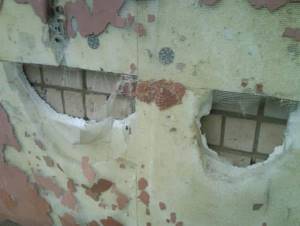
Unlike polystyrene (pictured), ecowool is not damaged by rodents
To compare materials, you can use the table:
| Parameter | Glass wool | Plates based on basalt wool | Expanded polystyrene | Ecowool |
| Thermal conductivity, W/(m*0С) | 0,043 | 0,047 | 0,05 | 0,04 |
| Density, kg/m3 | 15 | 37 | 25 | 35 |
| Vapor permeability | High | High | Low | High |
| Biological resistance | Does not rot, is not damaged by rodents | Does not rot, may be slightly damaged by rodents | Does not rot, severely damaged by rodents | Does not rot, is not damaged by rodents |
| Fire safety | The fiber itself does not burn, but the binder may melt, releasing toxic smoke. | Does not burn; when heated strongly, it can release decomposition products of the binder | Actively melts with the release of large amounts of toxic smoke | Does not ignite, dies out quickly, and when exposed to an open flame it smolders, emitting relatively harmless smoke. |
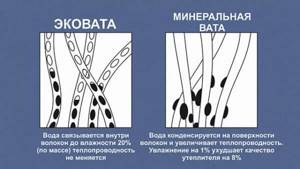
The special structure of the fibers ensures the preservation of heat-saving qualities when moistened
As you can see, it is not possible to make a clear choice as to which is preferable – ecowool or mineral wool. The material we are considering may well compete with insulation based on mineral fiber, surpassing them in some parameters, and inferior in others.

Heat resistance comparison
From this comparison we can draw a fairly simple conclusion: the decision to use ecowool or other material is best made after a comprehensive analysis of the conditions. This insulation is quite effective, so the main factors of choice will be its availability in the region and the cost of thermal insulation work.
Insulation of a block house (aerated concrete, gas silicate, foam concrete)
How to insulate aerated concrete or gas silicate houses with ecowool? Block houses are usually insulated from the outside. The sheathing is placed vertically in increments of 600-1000 mm and insulated using the wet-glue method. The concept of a breathable house also works in this case, and a vapor barrier film is usually not installed in them.
The main thing is that before insulating a block house, you need to calculate where the dew point will be in such a wall pie, since it may remain in the insulation. And although ecowool is okay with waterlogging, it is not endless.

Now let's talk about specific insulation units.
Technology for laying ecowool in floor construction

- Ecowool is laid in the floor structure between the joists. There is no need to use rubber protective gloves for work; cotton gloves are sufficient.
- Ecowool is poured between the joists onto a pre-laid roll vapor barrier or hemming sheet material.
- The poured ecowool is slammed down with a stiff brush or compacted in any other available way. The volume of ecowool should be 10% greater than the filled volume.
- After drying, the ecowool is covered with glassine and further planning of the floor is carried out.

